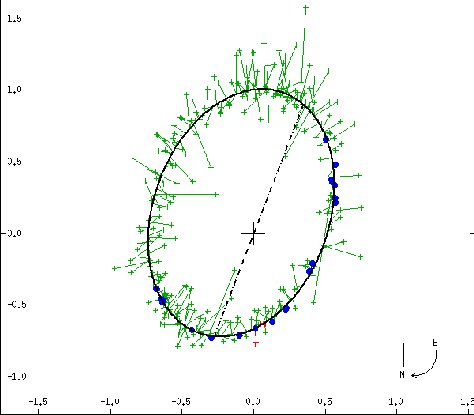
 |
Seventh magnitude Tau Cygni B orbits brighter Tau Cyg A (at the cross, the two actually orbiting a common center of mass that lies between them) over a period of 49.62 years at an average separation of 18.5 Astronomical Units, which at the distance of the star translates into just 0.91 seconds of arc (the scale on the axes), making the binary a challenge to split in a small telescope. The well-defined orbit allows precise determination of the sum of the masses of the two stars. The distortion of the orbit (that Tau Cyg A is not at the focus of the ellipse) is the result of orbital tilt (46 degrees to the plane of the sky) and its orientation. (W. I. Hartkopf and B. D. Mason, Sixth Catalog of Orbits of Visual Binary Stars, US Naval Observatory Double Star Catalog, 2006.) |